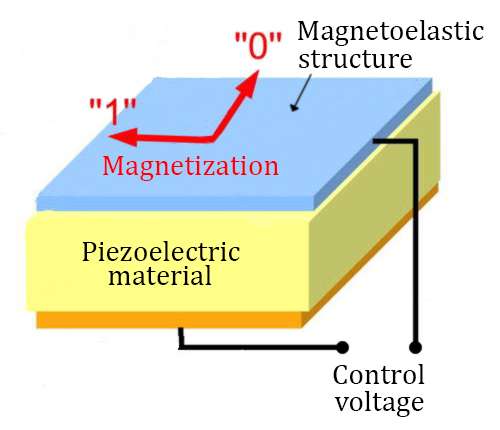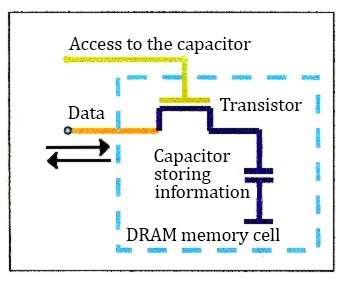Researchers create magnetic RAM

MIPT researchers teamed up with collaborators for a successful demonstration of magnetoelectric random access memory (MELRAM). A transition to magnetoelectric memory could enable substantial energy savings, as well as the instantaneous startup of devices. Their paper was published in Applied Physics Letters.
Random access memory, or RAM, is one of the principal components of any computer or smartphone. The most common type of RAM is known as dynamic random access memory, or DRAM for short. It is a semiconductor memory based on a simple principle. In DRAM, each memory cell consists of one capacitor and one transistor. The transistor is used to admit current into the condenser, allowing it to be charged and discharged. The electrical charge of the capacitor stores binary information, which is conventionally represented as zeros (uncharged) and ones (charged).
"RAM technology has been rapidly advancing, with memory modules becoming ever faster. However, this type of memory has one major limitation that cannot be overcome: its low energy efficiency," says principal investigator Sergei Nikitov of MIPT. "In this paper, we present the magnetoelectric memory cell. It will reduce bit reading and writing energy consumption by a factor of 10,000 or more."
A MELRAM cell consists of two components with remarkable properties. The first is a piezoelectric material. Piezoelectricity is a property of certain materials that are deformed in response to applied voltage and, conversely, generate voltage under mechanical stress. The other MELRAM component is a layered structure characterized by a high magnetoelasticity—the dependence of magnetization on the elastic strain. Because the structure is anisotropic—that is, it is organized differently along different axes,—it can be magnetized along two directions that correspond to the logical zero and one in binary code. In contrast to dynamic RAM, magnetoelectric memory cells are capable of maintaining their state: They need not be continually rewritten and do not lose information when power is cut off.

"We built a test piece about one millimeter across and showed that it works," says Anton Churbanov, a Ph.D. student at the Department of Physical and Quantum Electronics, MIPT. "It is worth noting that the structures we used could serve as the basis of nano-sized memory cells, whose dimensions are similar to those of regular RAM cells."
At the heart of the study is a novel data reading mechanism, providing an alternative to the sophisticated magnetic field sensors used in earlier MELRAM cells, which do not allow for easy downscaling. The researchers found a simpler way to read information, which does not require such complicated arrangements. When a voltage is applied to the memory cell, the piezoelectric layer of the structure is deformed. Depending on the nature of the strain, magnetization assumes a particular orientation, storing information. The changing orientation of the magnetic field gives rise to increased voltage in the sample. By detecting this voltage, the state of the memory cell can be determined. But the reading operation might affect magnetization; therefore, it is necessary to recommit the value that has been read to the memory cell.
The authors of the paper say their solution can be scaled down without any adverse effect on its efficiency. This makes MELRAM promising for computing hardware applications mandating low energy consumption.
More information: Alexey Klimov et al, Magnetoelectric write and read operations in a stress-mediated multiferroic memory cell, Applied Physics Letters (2017). DOI: 10.1063/1.4983717
Journal information: Applied Physics Letters
Provided by Moscow Institute of Physics and Technology



















